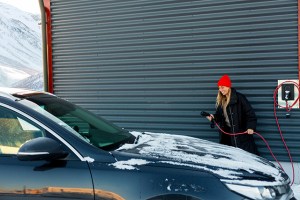Let’s be honest, it’s easy to take our cars for granted. A push of a button, a pull of a lever and a step on a pedal and we can go anywhere. But behind that facade of simplicity is a complex machine made up of many different moving piece. Keeping all those pieces humming along in working order is a primary responsibility of car ownership. Not only does proper car maintenance extend the lifespan of the vehicle, it ensures the car is safe to drive. With this in mind, let’s examine how electric vehicle maintenance compares to that of a gas-powered car.
How Electric Vehicle Maintenance Is Different
EVs have fewer parts than gas-powered cars, meaning fewer mechanical pieces that need to kept in good condition and less of a chance of anything breaking or wearing down. Because of this, EVs require less maintenance than their gas-powered counterparts.
The primary advantage of EVs, in regard to maintenance, is the lack of an internal combustion engine. Without this major piece of equipment, there is no need for common maintenance tasks like motor oil changes and engine air filter replacements. EVs also don’t require components such as radiator fluid (although some use coolant for battery management that requires periodic replacement), drive belts, sparkplugs and fuel filters, just to name a few. All of these things need to be inspected and eventually replaced in gas-powered cars.
Another major point of difference is in the brakes. EVs utilize a braking system known as regenerative braking, which converts the car’s forward momentum energy into electricity to power the motor. The system has the additional benefit of drastically reducing the wear and tear of the vehicle’s brakes and brake pads. As such, an EV’s braking system can last longer.
EV Maintenance Considerations
Less maintenance doesn’t equal zero maintenance. EV owners should keep up with their car’s recommended maintenance schedule to prolong the vehicle’s lifespan and keep their warranty intact.
All non-engine related components still need to be checked and, if needed, replaced. This includes tires, windshield wiper blades and fluid, cabin air filter, battery coolant, steering and suspension components, head and taillights and brake fluid. Like all cars, gasoline or electric, your best source of maintenance information comes from the owner’s manual.
EV Maintenance Costs
The convenience and peace of mind that come with less maintenance concerns can’t be discounted. But this benefit also adds up to real dollars and cents. The AAA’s 2023 Your Driving Costs study found EVs cost about 8 cents per mile to maintain, while the average medium sedan costs about 11 cents per mile. And when comparing total operating costs of the two over the course of 10,000 miles, there’s a savings of more than $500 per year.
As we’ve all heard, the cost of owning a car begins when you drive it off the lot. Between maintenance and repairs plus expenses like insurance, registration, taxes, financing and fuel, motorists spend an average of $12,182 each year on their cars. Getting several hundred dollars back in your pocket is no small change.
Determine the full expense of driving an EV in your state with AAA’s Cost of Ownership calculator.
Visit AAA’s Electric Vehicle platform for more information on these cars of the future.
3 Thoughts on “Electric Vehicle Maintenance 101”
Leave A Comment
Comments are subject to moderation and may or may not be published at the editor’s discretion. Only comments that are relevant to the article and add value to the Your AAA community will be considered. Comments may be edited for clarity and length.
















EVs are reaching a slow down in sales. The people who wanted an EV and can deal with its limitations have all bought an EV now. Government subsidies and tax rebates have fueled* this (sorry for the pun!). When I ask all my friends about when they would get an EV, all of them say that they would never consider buying one at this time, mostly talking about the lack of infrastructure to support them. Also, the “charge” that is put in the EV is from your local power company (which is likely nuclear, natural gas). EVs cannot be created without significant industrial mining in China (using coal, diesel, and petrol) equipment. EV manufacturers need to connect with the next tier of potential customers, so that sales can continue to rise. I am not interested in EVs at this time because I grew up with ICE cars and I enjoy the maintenance aspects, such as changing oil, doing brake jobs, etc. Buying an EV to me is like buying a refrigerator … use it 5 years and toss it out … but wait, the recycling of all these batteries is not good either!
And after 10 years you’re less than a quarter of the way to recouping the crazy premium of an EV. Not to mention the cost of putting in a charging station in your garage. At some future time it will probably happen.
Wait till you have to replace your electric vehicle’s battery pack. You will have a heart attack at the cost.